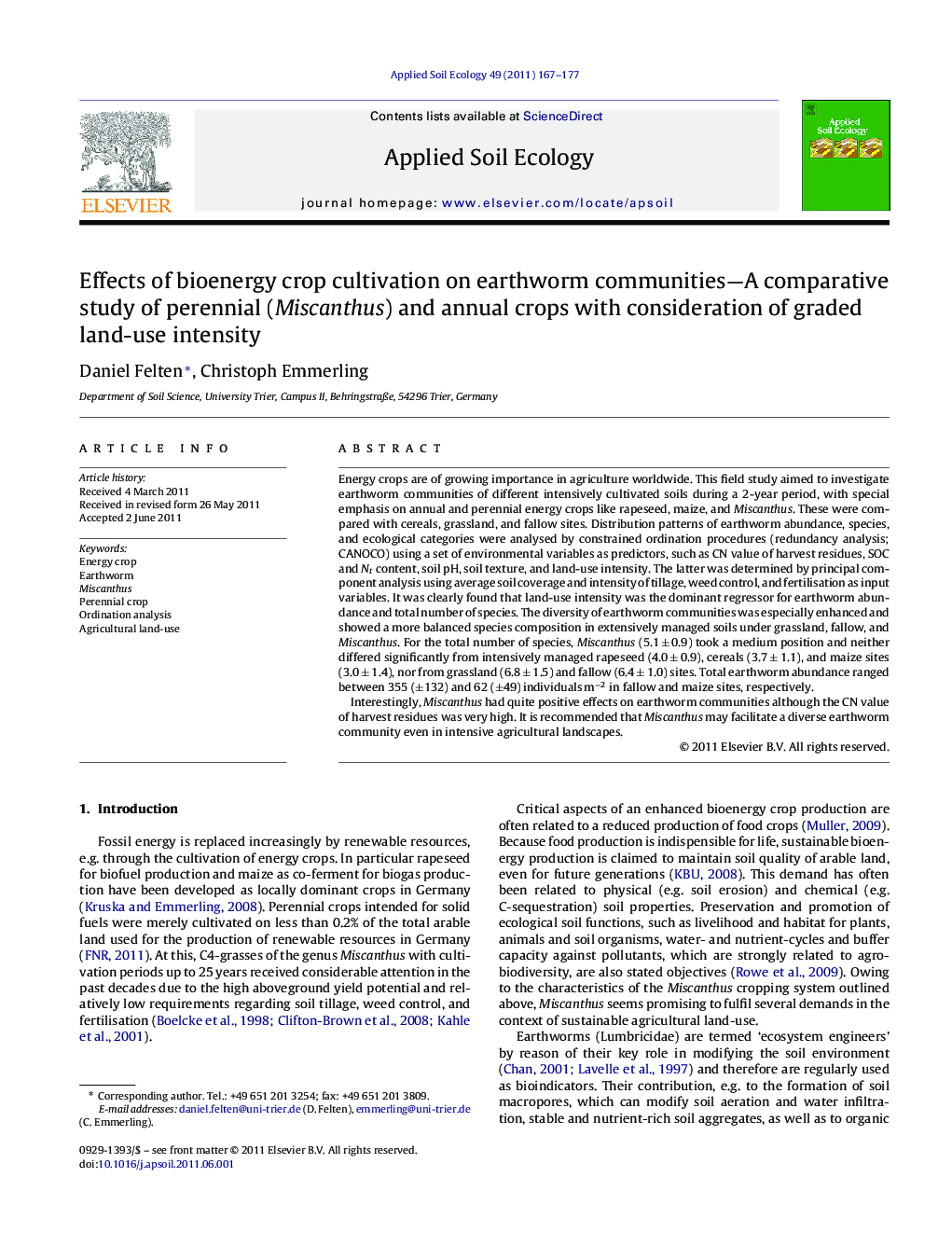| Article ID | Journal | Published Year | Pages | File Type |
|---|---|---|---|---|
| 4382710 | Applied Soil Ecology | 2011 | 11 Pages |
Energy crops are of growing importance in agriculture worldwide. This field study aimed to investigate earthworm communities of different intensively cultivated soils during a 2-year period, with special emphasis on annual and perennial energy crops like rapeseed, maize, and Miscanthus. These were compared with cereals, grassland, and fallow sites. Distribution patterns of earthworm abundance, species, and ecological categories were analysed by constrained ordination procedures (redundancy analysis; CANOCO) using a set of environmental variables as predictors, such as CN value of harvest residues, SOC and Nt content, soil pH, soil texture, and land-use intensity. The latter was determined by principal component analysis using average soil coverage and intensity of tillage, weed control, and fertilisation as input variables. It was clearly found that land-use intensity was the dominant regressor for earthworm abundance and total number of species. The diversity of earthworm communities was especially enhanced and showed a more balanced species composition in extensively managed soils under grassland, fallow, and Miscanthus. For the total number of species, Miscanthus (5.1 ± 0.9) took a medium position and neither differed significantly from intensively managed rapeseed (4.0 ± 0.9), cereals (3.7 ± 1.1), and maize sites (3.0 ± 1.4), nor from grassland (6.8 ± 1.5) and fallow (6.4 ± 1.0) sites. Total earthworm abundance ranged between 355 (±132) and 62 (±49) individuals m−2 in fallow and maize sites, respectively.Interestingly, Miscanthus had quite positive effects on earthworm communities although the CN value of harvest residues was very high. It is recommended that Miscanthus may facilitate a diverse earthworm community even in intensive agricultural landscapes.
► Land-use intensity was the dominant regressor affecting earthworm distribution. ► The diversity of earthworm communities was enhanced by decreasing land-use intensity. ► Number of species in Miscanthus was similar to extensively and intensively used sites. ► Energy crops with closer C:N ratio of residues might be more favourable for endogeics. ► Beneficial properties of Miscanthus may be assignable to similar managed energy crops.
